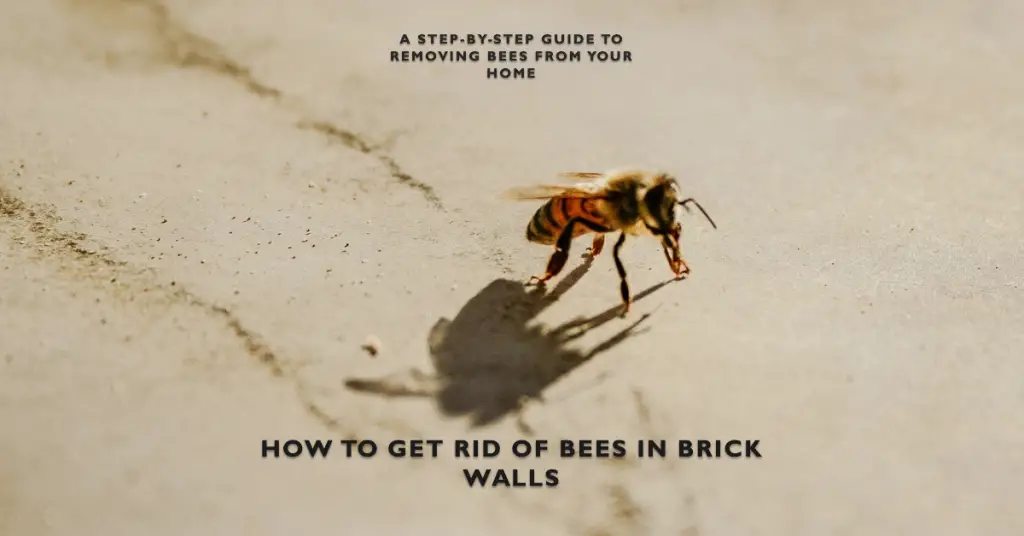Discovering bees nesting within the walls of your house can be a concerning situation. Bees are beneficial insects for the environment, but when they take up residence in your walls, it can lead to structural damage and potential risks. This article will discuss signs of bees in walls, their lifespan when trapped, the implications of leaving them be, and effective methods for safely removing bees nesting in brick walls.
Signs of Bees in Walls
Identifying the presence of bees within your walls is crucial for addressing the issue promptly. Look out for the following signs:
Audible buzzing
If you hear consistent buzzing sounds coming from your walls, it may indicate the presence of bees.
Visible bees entering/exiting
Observe the exterior of your house for bees. The frequently entering or exiting through small holes or cracks in the brickwork.
Accumulation of beeswax
Bees often create combs and honeycombs within wall cavities, resulting in the buildup of beeswax near potential entry points.
Stains or discoloration
The presence of honey or pollen may cause staining or discoloration on the interior or exterior walls.
Lifespan of Bees Trapped in Walls
Bees trapped within walls will continue their normal life cycle until their natural lifespan ends. Worker bees, the most common type found in walls, typically live for a few weeks. The exact duration depends on various factors, including the species, environmental conditions, and availability of food and water sources.
Implications of Leaving Bees in Wall
Leaving bees within your walls is not recommended due to several potential issues:
Structural damage
Bees construct honeycombs, which can be heavy and cause damage to the walls over time.
Infestation expansion
If the bee colony is left unattended, it may grow in size and split into multiple colonies, further exacerbating the issue.
Attracting pests
The presence of bees and their honey can attract other pests, such as ants or rodents, which can lead to additional problems.
How to Get Rid of Bees in Brick Walls
When dealing with bees nesting in brick walls, it is crucial to approach their removal safely and efficiently. Here are the recommended steps:

Consult a professional
Contact a local beekeeper or bee removal expert who specializes in relocating bees. They will assess the situation, determine the species of bees, and provide appropriate guidance.
Bee relocation
Experts may employ techniques such as bee trapping or the use of specialized equipment to safely remove the bees without harming them. This ensures the preservation of the bee population and benefits the environment.
Wall repairs
Once the bees have been safely relocated, it is essential to repair the wall openings to prevent further infestations and address any structural damage. Consult with a professional contractor to ensure the repairs are done correctly.
Related Posts:
How to Smoke Bees Out of a Wall
Smoking bees out of a wall is generally not recommended due to the potential harm it can cause to the bees and the risk of fire. However, if professional assistance is unavailable, here is a general approach:
- Safety precautions: Wear protective clothing, including a beekeeping suit, gloves, and a veil, to minimize the risk of stings.
- Choose an appropriate time: Early morning or late evening, when bees are less active, is the best time to attempt smoking them out.
- Prepare a smoker: Use a bee smoker, a device that emits cool smoke, to calm the bees and make them less aggressive.
- Light the smoker: Place appropriate materials, such as dried twigs or straw, inside the smoker and light it until smoke is produced.
- Apply smoke near the entrance: Direct the smoke toward the bee entry points to encourage them to leave the wall.
- Monitor bee activity: Observe signs of bees exiting the wall. Once they have evacuated, proceed with sealing the openings and repairing the wall.
Conclusion
Discovering bees in your walls is a situation that should be addressed promptly. Identify the signs, understand the implications of leaving them be, and take appropriate action to safely remove the bees. Consulting a professional is strongly advised to ensure the preservation of the bee population and the integrity of your home.
